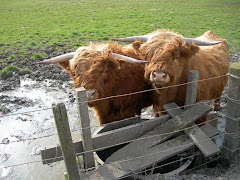Loch Lomond is a freshwater loch lying on the Highland Boundary Fault. It has the largest surface area of any lock in the United Kingdom. Stretching 39km in length and 8km at its widest point, Loch Lomond possibly hosts the largest variety of fish in Scotland. Salmon and sea trout return into the Southern reaches of the loch from the River Leven, whilst brown and rainbow trout, roach, perch, pike, chub and dace offer every angler a different catch every time!
The River Leven is Scotland's premier salmon and sea trout fishery. At six miles long, it's not a large river but every fish has to go through the Leven in order to get to the Loch and the spawning rivers; this is the key to its success. Fly fishing is the most popular method and between 11th February and 31st October, anglers are treated to a wealth of salmon and sea trout. Although you'll need to wait until the last week in March before seeing a decent run of spring salmon.
The River Endrick is the prime spawning river of the Lomond system. Anglers are urged to return all coloured fish to the river to ensure activity for future years. The river is well looked after by the volunteers of the River Endrick Working Group. Overhanging trees are carefully pruned back each year allowing the anglers space to cast their fly. Between the months of July and October are when great fishing can be found. If you find yourself on the water after it has risen and starting to fall, the river can be prolific and even complete beginners can land that special catch.
The River Fruin, located on the west of the Loch, is another main river. It has developed a reputation for providing excellent salmon and sea trout. Fly fishing is the only method on this river and many anglers will tell you that being in the right place at the right time is vital for success.
If you're venturing out onto the waters, you might want to try some of these Lures and Flies. Trolled lures do well in the early part of the season. During the summer months, better success may be found with patterns such as Mallard and yellow, Invicta and Big Daddy Longlegs.
Permits are required for Salmon, Sea Trout and Brown Trout so make sure you have one before making that first cast.
The River Leven is Scotland's premier salmon and sea trout fishery. At six miles long, it's not a large river but every fish has to go through the Leven in order to get to the Loch and the spawning rivers; this is the key to its success. Fly fishing is the most popular method and between 11th February and 31st October, anglers are treated to a wealth of salmon and sea trout. Although you'll need to wait until the last week in March before seeing a decent run of spring salmon.
The River Endrick is the prime spawning river of the Lomond system. Anglers are urged to return all coloured fish to the river to ensure activity for future years. The river is well looked after by the volunteers of the River Endrick Working Group. Overhanging trees are carefully pruned back each year allowing the anglers space to cast their fly. Between the months of July and October are when great fishing can be found. If you find yourself on the water after it has risen and starting to fall, the river can be prolific and even complete beginners can land that special catch.
The River Fruin, located on the west of the Loch, is another main river. It has developed a reputation for providing excellent salmon and sea trout. Fly fishing is the only method on this river and many anglers will tell you that being in the right place at the right time is vital for success.
If you're venturing out onto the waters, you might want to try some of these Lures and Flies. Trolled lures do well in the early part of the season. During the summer months, better success may be found with patterns such as Mallard and yellow, Invicta and Big Daddy Longlegs.
Permits are required for Salmon, Sea Trout and Brown Trout so make sure you have one before making that first cast.
| Written by Glen Buchanan, Keep-Fishing, Fishing on Loch Lomond Article Source: http://EzineArticles.com/?expert=Glen_Buchanan | |









No comments:
Post a Comment